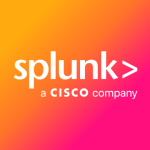What is our primary use case?
I mostly just onboard different applications in the company under the Dynatrace platform. Occasionally, they will have issues, then I use AppMon in order to tell them what the issue is. It usually is something simple: The URL, this particular service is slow, or your database is not responding correctly.
It is performing well.
What is most valuable?
It is different for me than other users. I like the PurePaths dashlet the most. This is mostly because (and I can count a handful at times where this has not been this scenario) as soon I open the PurePaths dashlet and sort by response time, there is the problem. Every time.
If the PurePaths dashlet pulls up 750,000 PurePaths, I really only needed to know about seven or eight of them. Then, being able to look into the code-level dive about it, that is just a sanity check. Just to make sure that it is the same issue multiple times, not a random anomaly where everything else was crap.
Also Errors dashlet, I use that a ton.
What needs improvement?
I would love to see a better data export, because AppMon's charting capabilities leaves a lot to be desired. The dashboarding capabilities leaves a lot to be desired. There are a lot of times, for example, at my last company, they wanted Dynatrace data in addition to a bunch of other stuff dumped into one place. It was not just performance metrics. The CEO wanted his business metrics in the same place as the performance metrics along with a lot of other stuff. However, Dynatrace could not export this type of stuff.
You have about a 5,000 line limit or you have to set up your CSV file just exactly. DC RUM can do it. It might take like an hour sometimes, but DC RUM can do it. I would really like to see the ability to export, in Dynatrace and AppMon, in essentially in a nice format of whatever you want to whatever else. That would be fantastic.
For AppMon, there is always room for improvement: charting, dashboarding, and user management. However, that is pretty much our fault with LDAP. The onboard process itself is a pain, even though we have scripted so much it, it is just very repetitive. There is a lot of alerts and things like that out-of-the-box that do not need to be there or that just do not do the right things.
For Dynatrace, I feel like it just needs a lot more technology support. I know they are trying to essentially get rid of AppMon and move toward the Dynatrace way of doing things. However, we are a multibillion dollar bank. We are not up-to-date. We are not going to be microservices for a long time. We are not going to be container for a long time, and we are probably one the most expensive clients that they have.
We are the ones who are going to drive a lot of the money factor so they need to have that. They need to have integration between the current set of tools so we have the ability to onboard five or six apps, then we'll also put the AppMon agent on it and show people the difference between it. It needs to be better integrated.
All of our team will go to a five minute sales meeting, if they were like, "Look, you can do this with a script." We are sold.
We do not want to do any of the regular AppMon stuff. However, when you have to convince the CTO that we are going to completely rip out the entire monitoring solution which we just spent the last 15 years trying to get a process set up for, and now we are going to redo it. That is not going to go over well. That is not a good conversation.
You need to have that ability to do MQ. I don't care who uses MQ, but apparently we do. If you can't look into those messages, then you just lost a half of our organization which can't be monitored with it.
For how long have I used the solution?
Three to five years.
What do I think about the stability of the solution?
With stability, I have never run into issues with Dynatrace causing an issue yet.
I have run into AppMon causing issues. There have been a lot times when I have waited for a release. AppMon does the release, then it ends up taking down our application. Now, the fix is immediate, but I have already loss face.
The last time, I took down the main application that lets you call tow trucks. It was just a monitoring loop, a simple thing. They fixed it in a patch. They knew about the issue and they told me immediately what the issue was. I got it fixed in 15 minutes. It took me six months to convince the team to install it in the first place and took me another seven for them to give me another shot at it. It was not a problem that showed up in QA, for whatever reason. So, I could not convince them that it does not exist anymore, because I could not show them any evidence that it existed in the first place. Let alone that I fixed it.
What do I think about the scalability of the solution?
I have never been more confident in a tool because I've seen how easy it is for it to deal with the .NET Applets. That is a big problem in AppMon. Unless every single person is naming their Applets, the exact same way and following the exact same pattern, it becomes an issue. The new tool does not run into that at all. Similarly, you can script it so it just automatically blasts across the organization. As long as it has the PurePath capabilities, somebody who is running, for example, the actual web application that tells people their accounts, that might be a different, more in-depth use case for AppMon versus Dynatrace. So far, the scalability of the solution is phenomenal.
How are customer service and technical support?
Anytime I can't find the answer immediately in docs or answers, I just open a ticket. They are very good about giving you a response.
Initially, I am talking about two or three years ago, I think they did not have enough personnel staffed there. Therefore, it would take them maybe two or three days to get to your ticket. Now, it is maybe the next day you will have a pretty reasonable answer and that is provided you did exactly what it says in the support ticket. For example, make sure you upload your support archive. Otherwise, you will burn a day and they will send you an email requesting you just upload this. That is shooting yourself in the foot, and that is not their fault.
Which solution did I use previously and why did I switch?
I have previously used siloed monitoring tools. I have used SiteScope. My current company uses ITCAM. They are okay. They get the job done.
At my previous employment, we used SiteScope and that was quite literally the way that I thought about it in day-to-day life, if you do not really give a crap about it, just put SiteScope on it. However, if you actually need to know if it is working, it needs to have Dynatrace.
I was always pushing for that sort of thing. There is stuff like Wiley where you are not getting 100% monitoring. There is another tool, one is a very new company, and it seemed to get the job done but that was only because we were using Citrix Xenapp. It was specifically able to decode the traffic for Xenapp and XenDesktop, which was what we were looking at. Apart from that, I have never had a situation where I was like, maybe we should not put Dynatrace on this. I have never run into that.
How was the initial setup?
I was not involved in the initial setup at my current company, but I was at a previous company.
For upgrading at my current company, that is in process. We are trying to figure out if it is better to blast it across the organization. We have five Dynatrace servers. They are all completely at capacity. They are all set at large. It is a really big deal for us to try to switch anything over. Right now, we are trying to figure out, do we just upgrade our collectors and hope for the best, or do we do it in QA and then in production?
A lot of people do not run the right thing in QA. It is never the case that their QA is identical to production. So, is that a good indication? I have run into issues before when upgrading from 5.6 to 6.1 expecting that all the bugs were ironed out. That is when I took down that application. Now, I do not have confidence in this upgrade process.
For the Dynatrace Managed version, that setup process was incredibly easy. It took 15 minutes.
What's my experience with pricing, setup cost, and licensing?
Just go with Dynatrace. Just start with Dynatrace. Do not go into AppMon. Start with Dynatrace, because AppMon is going to give you so much extra stuff that 99% of your user base will not need it, including yourself.
You don't need AppMon. I am a hardcore AppMon guy and I am still saying this. It is a lot nicer to be able to start with the Dynatrace solution, be able to script everything, and start integrating the new thing than it is to try to do the old tool set.
What other advice do I have?
I started in the PDP program at Dynatrace. That was when they were still Compuware. Then they became Dynatrace, and I went to a different company, now I am at PNC. I have done the exact same thing for several years in different places.
In my current and previous positions, AI is not important when it comes to IT's ability to scale in the cloud and manage performance problems.
The previous company bought it, and they did not even set it up. I onboarded a bunch of apps. So, they were way too fledgling to try to start looking into it.
What I would use AI for is if it could assist me in saying, "These are your common PurePath patterns." A lot of times in the ending part of an URL, they will have /apps, /data/, then they will put something lie the date or some big custom code. For example, we had one application for tow trucks, which would tell them the URL contained in PurePath, for the actual seven decimal place of the geographic coordinates of that tow truck.
This is not a good way to look at data. If the AI could tell me something about it, just mask it out, or just know this is the same type of data as these other ones and not worry about the extra text part of the piece. That would be the foremost use case for me. After that, I am not sure.
I would need to use it a lot more to maintain my own trust factor in it before I would want to try to tell somebody that is asking me what the problem is. Just immediately saying AI says this. I do not have a high confidence enough factor in it, because I have never really used it.
If my organization had just one solution that could provide real answers, not just data, it would probably put me out of a job. Most of the time, when I get a ticket, they will ask me what the problem is. I will point out the problem, and it is something which is you need to code this better or you messed up these settings. Therefore, as far as helping me not have those mundane sort of tickets where I don't really want to waste my time with people. It is fine for the first few, but after the thirtieth or fortieth person, you tell them that you wrote this very poorly. It is better to just have some tool tell them that this is probably not the best way to do this.
That would be the initial benefit of the one solution. A part from that though, all I am doing is onboarding. The new Dynatrace already takes care of this. So, I am not really sure what my role would be afterwards. Right now, the APM is siloed off from the development teams. If you are going the full Dynatrace route with AI and getting the opportunity of the AIs already going to tell them what the issue is. Then, the APM team does not really need to exist anymore, apart from doing migrations.
Most important criteria when working with a vendor: That initial pairing of sales versus FTS. If I could reach out to them and get answers within a day, or better yet, within an hour. That is one of the best things because a lot of times that initial conversation can get derailed so quickly. You are not going to get more than five or ten minutes to pitch it to your boss. They are always at meetings. For example, my boss, at my previous place, I would be able to sit with him and talk to him about this thing. Then he would get, maybe, five minutes a week of his bosses level. That is the person who is going to sign the paycheck.
Therefore, when he goes to a meeting, and it is a week later, he gives the spiel and has it all ironed out. Then, his boss asks him, "What about this?" Now, he does not know the answer, and I can't get the answer, then I need to get somebody on the phone stat to give him an answer. Otherwise, we have to wait another week. That is a big deal for us to have that communication open.
Disclosure: PeerSpot contacted the reviewer to collect the review and to validate authenticity. The reviewer was referred by the vendor, but the review is not subject to editing or approval by the vendor.















